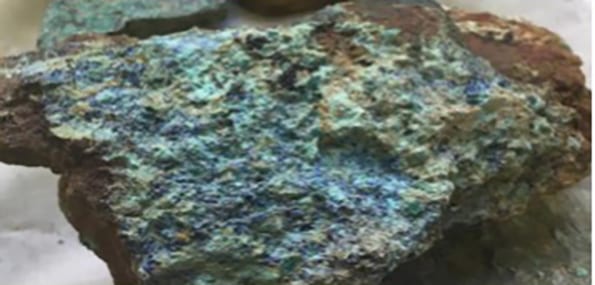Emmerson Resources (ASX: ERM) is to step up its exploration activities at the Kiokla Gold-Copper Project in NSW after studies identified a number of quality drill targets.
The company has committed to a minimum of 2000m of diamond drilling to commence in April and test targets within the 15 sq. km Kiola Geochemical Zone – an area the company says is highly anomalous gold-copper and historic workings
Kiola lies within the highly ranked Molong Belt which hosts the Alkane Resources Boda discovery and Newcrest’s world class Cadia-Ridgeway deposit.
Managing Director, Rob Bills, said the use of new cutting-edge techniques combined with traditional exploration has outlined several porphyry and related high level vein style gold-copper targets at relatively shallow depths
No previous deep drilling despite positive signs of gold-copper mineralisation at the surface.
“Systematic exploration at Kiola has defined a number of very exciting drill targets that are based on both traditional exploration methods of geology, geophysics and geochemistry plus the application of new, cutting edge techniques developed by the University of Tasmania’s ARC Linkage Project,” Mr Bills said.
“Kiola was pegged by Emmerson in 2018 from the application of big data analytics – aimed at utilising multiple levels of independent data to pinpoint the next big discovery in the highly prospective Macquarie Arc of NSW.
“Stage 1 drilling at Kiola is within the Kiola Geochemical Zone (KGZ) which consists of ~15sq. km of very elevated gold and copper geochemistry, old historic copper mines, skarns that contain gold, copper and zinc. The target area lacks deep drilling to test for the causative source of the gold and copper.”
The Kiola project is one of the highest ranked, early stage gold-copper projects in the company’s portfolio and is centred on the Kiola Geochemical Zone (KGZ).
Mr Bills said it encompasses favourable Ordovician age rocks that display anomalously high gold and copper geochemistry plus historic workings. Recent work has confirmed that the KGZ contains many of the attributes of world class porphyry gold-copper mineralisation and is divided into a northern area centred on the Nasdaq skarn, and a southern area around the South Pole, Kiola and Right Hand Creek mine.
Some 15-line km of Induced Polarisation (IP) geophysics collected in late 2019 has reinforced the depth potential of the target areas, particularly when combined with the geochemistry, age dates, intrusion fertility plots and geology – keeping in mind that there is limited exposure of the Ordovician stratigraphy due to soil cover.
Emmerson’s field programme has included additional soil and rock chip geochemistry, with rock chip samples up to 19.6g/t gold and 2.16% copper. Recent age dating of a nearby monzonite intrusion places this project in the similar, fertile age bracket to other world class deposits in the belt including Newcrest’s Cadia- Ridgeway deposit. Furthermore, the aeromagnetics suggests these late Ordovician monzonite intrusives occur not only at Nasdaq, but also Dollys North and South Pole.
Three drill holes to be completed on the IP line 6217785N (prop 1, 2 & 5) are designed to test different targets including mineralisation associated with skarn-pyrite alteration and interpreted underlying porphyry style gold-copper. Noting that skarns have been instrumental to the discovery of many porphyry deposits in the world including the Cadia-Ridgeway deposits.












